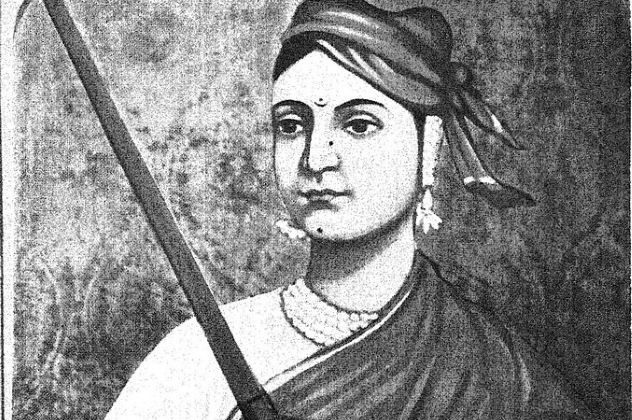 Technology
Technology  Technology
Technology  Humans
Humans 10 Everyday Human Behaviors That Are Actually Survival Instincts
 Animals
Animals 10 Animals That Humiliated and Harmed Historical Leaders
 History
History 10 Most Influential Protests in Modern History
 Creepy
Creepy 10 More Representations of Death from Myth, Legend, and Folktale
 Technology
Technology 10 Scientific Breakthroughs of 2025 That’ll Change Everything
 Our World
Our World 10 Ways Icelandic Culture Makes Other Countries Look Boring
 Misconceptions
Misconceptions 10 Common Misconceptions About the Victorian Era
 Mysteries
Mysteries 10 Strange Unexplained Mysteries of 2025
 Miscellaneous
Miscellaneous 10 of History’s Most Bell-Ringing Finishing Moves
 Technology
Technology Top 10 Everyday Tech Buzzwords That Hide a Darker Past
 Humans
Humans 10 Everyday Human Behaviors That Are Actually Survival Instincts
 Animals
Animals 10 Animals That Humiliated and Harmed Historical Leaders
Who's Behind Listverse?

Jamie Frater
Head Editor
Jamie founded Listverse due to an insatiable desire to share fascinating, obscure, and bizarre facts. He has been a guest speaker on numerous national radio and television stations and is a five time published author.
More About Us History
History 10 Most Influential Protests in Modern History
 Creepy
Creepy 10 More Representations of Death from Myth, Legend, and Folktale
 Technology
Technology 10 Scientific Breakthroughs of 2025 That’ll Change Everything
 Our World
Our World 10 Ways Icelandic Culture Makes Other Countries Look Boring
 Misconceptions
Misconceptions 10 Common Misconceptions About the Victorian Era
 Mysteries
Mysteries 10 Strange Unexplained Mysteries of 2025
 Miscellaneous
Miscellaneous 10 of History’s Most Bell-Ringing Finishing Moves
Ten Tough & Terrible Queens Who Ruthlessly Ruled Their World
Think back to the history books you read as a kid. They were filled with tales of legendary and impactful leaders, of course. But most (if not all) were probably men, right? From Alexander the Great and Napoleon to George Washington, Abraham Lincoln, Winston Churchill, and everyone in between, the world would seem to have been run by men. And while that may be mostly true throughout history, it’s not entirely the case. As it turns out, powerful and shrewd women have had an outsized impact on many major world events.
Sadly, their stories aren’t covered in school textbooks and history courses. Between the basic world history curriculum and pop culture’s very specific focus on certain past events, it’s (nearly all) men throughout. But we can change that today! In this list, you’ll learn all about ten very powerful women who wreaked havoc in the ancient world. From Madagascar to East Asia to Europe, women all over were working right alongside influential men to shape the course of history. These are their fascinating, worthy, and underreported stories.
Related: Top 10 Surprising Facts About Queen Victoria
10 Rani Lakshmi Bai

Lakshmi Bai was born in the early 1830s to an influential family in northern India. They were in the priestly caste in their region and had access to things most locals didn’t have. Lakshmi was a young girl raised alongside her brothers. So her dad brought her along to learn traditionally masculine things like sword fighting, horseback riding, and martial arts. Of course, those were extremely unusual things for women of that time to learn. However, her life changed when she was a young woman.
She was married off to the maharaja of an independent regional state called Jhansi. Sadly, that maharaja died not long after their marriage. He and Lakshmi hadn’t produced any children when he died. So without an heir, Jhansi was suddenly lacking a rightful ruler. Seeing the power vacuum there, British colonial officials moved to annex the region. But Lakshmi—who was just 22 years old when the English moved in to take Jhansi by force—didn’t want any part of it.
When she refused to surrender the independent region to British rule, her subjects officially named her regent of the state. Then, in 1857, she helped lead a mutiny against British colonial officers in the area. Now officially the Rani of the state, Lakshmi led an army into a vicious fight against privateers working for the East India Company. Allied states around Jhansi fell in short order, but Lakshmi and her men resisted. She was even able to capture the local British treasury.
Then, in a stunning upset, her forces took the fortress of Gwalior and won the much-needed arsenal of weapons inside. Sadly, luck would soon run out for Lakshmi. She was killed in battle—while fighting on the ground and disguised in men’s clothes—during a skirmish with British forces not long after the arsenal assault. But even years after her death, Lakshmi Bai remained a powerful symbol of Indian resistance against British colonial forces.[1]
9 Wu Zetian
Wu Zetian was the key woman holding together the Tang Dynasty for decades during the late 7th and early 8th centuries. In fact, she was the only woman to reign as emperor in all of Chinese history. But getting into power wasn’t easy—and keeping it proved even harder. The Tang Dynasty began in the middle of the 600s. As far as their treatment of women went, Tang leaders were somewhat progressive for the time.
Wu, who began as a concubine for a prior emperor, used that to her advantage. During her early life, she was the favored concubine of two different emperors in the dynasty. Along the way, she gave birth to several sons. Then, when the emperor’s wife tried to have her ousted, Wu accused the woman of plotting to kill her own daughter. Palace disorder erupted, and Wu became empress in the aftermath.
When her now-husband suffered a stroke during his rule, Wu rushed into the power vacuum. She created a secret police organization of loyalists. They began spying on other political leaders. Soon, they were reporting discontent back to Wu. She summarily had many supposed dissidents executed. Others were the subject of complicated and vicious assassination plots.
Wu even went back and killed her husband’s former wife to ensure no other loyalties in the dynasty. Then, when her husband died months after his stroke, Wu made her son emperor. She knew she could control him from behind the scenes and continue to rule the empire—and that’s exactly what she did.
In 690, her son decided to give up his office. By then, Wu had installed loyalists at all levels of government. So, with no opposition from within or without, she became the only natural choice to replace the emperor.
Interestingly, once she “officially” took the throne, her public rule was fairly conventional. She did do two key things, though: she worked to improve the status of women within the dynasty, and she brought in scholars and academics to run high-level government posts. Not only did that make the Tang Dynasty function better in the long run, but it also ushered in a long period of cultural flourishing that would serve greater China for centuries.[2]
8 Tomyris
During the 6th century BC, Cyrus the Great ruled the Achaemenid Empire with an iron fist. Even today, scholars and historians know him as one of the most powerful Persian rulers who ever lived. All around the region, he routinely conquered other empires and subjugated other groups. He won battle after battle during his long, violent reign. Stories of his brutality and military cunning struck fear into the hearts of other peoples for thousands of miles.
However, he was felled by one very, very powerful woman named Tomyris. And it’s a shame how little the world knows about her amazing story today. The Massagetae were a group of Scythian peoples who lived in Central Asia at the time of Cyrus’s rule. They were experts on horseback and used the powerful beasts expertly in both battle and mass migration.
By the Middle Ages, those Massagetae people became a group still well-known today: the Huns. Early on, Cyrus didn’t view the Huns as a threat. In fact, in one infamous event, he tricked a group of Massagetae soldiers into getting drunk. While they were inebriated, Cyrus’s men captured and imprisoned them.
While in prison, one of the Massagetae soldiers—a young man named Spargapises—killed himself while in custody. Again, Cyrus didn’t think much of the move, as he considered the man to be just another Massagetae nomad. But he was far from average: He was Tomyris’s beloved son.
Enraged at her son’s death, Tomyris sent messengers to Cyrus, demanding answers and compensation. When Cyrus ignored all those requests, the grieving mother sought retribution instead. Tomyris challenged the Persians to a battle, and Cyrus accepted. The Massagetae had more soldiers who were more well-trained than they let on, though, and soon Cyrus was in trouble.
Tomyris’s men surrounded the Persians on all sides and massacred scores of Cyrus’s soldiers. As for Cyrus himself, Tomyris personally saw to it that he was murdered by her own sword. Then, she placed his severed head in a bag of blood and rode home to celebrate the victory in honor of her fallen son.[3]
7 Nzinga
In 1624, a woman named Nzinga Ana (sometimes spelled Njinga) became the ruler of the kingdom of Ndongo. The powerful kingdom was in the present-day southwest African nation of Angola. At the time, Portuguese slave traders had been raiding the area for years. In some cases, they would trade with kingdoms in the region and acquire slaves to take to the New World. In other cases, they would outright capture, kidnap, and steal away innocent people to sail to America.
By the time Nzinga rose to power, she intended to keep the area’s Mbundu people from being stolen away. To do so, she did something shrewd: Rather than fight the Portuguese, who had better firepower, she chose to ally with them. Linking up with European naval power gave her a natural ally to fight against other local kingdoms and peoples. And it ensured the Mbundu peoples of Ndongo wouldn’t be enslaved by the raiding Portuguese ever again.
That was nice for a while, but after just two years, Portuguese slave traders broke the alliance. The Portuguese again began enslaving the Mbundu people. Enraged, Nzinga ordered her subjects to move further west. Once they reached a place called Matamba, they formed a new government there. As Portuguese invaders took control of Ndongo, Nzinga became an insurgent. She allied with sympathetic Dutch slave traders in a new show of force against the Portuguese.
Then, she started leading raids against Ndongo to kill Portuguese sailors and soldiers as well as their unfortunate African allies. Nzinga wasn’t able to topple Portugal’s influence in the area, but she did have success in Matamba. By the year of her death in 1663, Matamba had become a thriving trading center in its own right.[4]
6 Amanitore
Meroe was an ancient city in the Nubian kingdom of Kush. Based in the middle of what is now Egypt, Meroe was ruled by a line of warrior queens who took the title Kandake. (That, by the way, is the origin of the modern name “Candace.” The more you know!) Meroe was tightly linked with the greater Kush kingdom, and thus the warrior queens were very often sisters or female cousins of the emperors and kings of Kush.
In Meroe, these leading women were allowed to set their own agendas, invade enemies, and direct forces to do battle. Across the board, Meroe had several capable female leaders over the centuries. But without a doubt, the best-known of these women was a warrior named Amanitore. She ruled over Meroe with power and cunning from the year before Jesus’ birth until AD 20.
Amanitore’s “Kandake” power within Kush was significant. She had the ability to depose male leaders who dared cross her. Legend has it that she even forced some to commit suicide in order to preserve her stake in the kingdom. During her reign alongside King Natakamani of Kush, Amanitore oversaw the construction and restoration of more than 200 pyramids too. In that way, she will forever be known as the last of the great builders of the Kush empire.
Greek and Roman sources indicate Amanitore was also likely the “one-eyed Nubian queen” who fought a vicious five-year battle against the Romans. And historians believe she is also likely the “Candace” mentioned by name in the Book of Acts, whose consort met Philip the Apostle during the New Testament run. Clearly, hers was a life well-lived![5]
5 Fredegund
Fredegund of Neustria began her life as a slave in the early 500s. She was ruthless in her ability to social climb, though. By her early 20s, she’d become a lover and then a wife to Chilperic, the king of Francia. As queen, she regularly assassinated court members who got in her way. She was interested in keeping Chilperic installed on the throne—and then paving the way for her son to assume the job when her husband died.
To clear this path, Fredegund had to be vicious. At one point in the late 500s, Chilperic was at war with his brother Sigibert. Fredegund hatched a plan to have assassins murder Sigibert with poisoned axes. The brutal assassination kept Chilperic in power and kept Fredegund in her esteemed role as the King’s right-hand woman.
Later, after dysentery killed two of Chilperic’s sons from his first marriage, Fredegund took action once more. Seeing this as her opportunity to wipe out that entire line, she sent another one of those sons to live in the outbreak area. Then, she put together a plot to kill another of his sons who’d been plotting against Chilperic. In the end, Chilperic himself was assassinated. It’s not clear if Fredegund was the one who set that in motion, but the aftermath (briefly) ended her behind-the-scenes reign.
Chilperic’s other brother assumed the throne and had Fredegund sent off to the countryside to live out her life in anonymity. She didn’t make it out there very long, though. Soon, she overthrew him and set up a new government “ruled” by her infant son Chlothar II. While he grew up, Fredegund reigned again as regent and continued to prove her cunning.[6]
4 Ranavalona
Ranavalona was the queen of Madagascar when her husband unexpectedly died in 1828. Like in most kingdoms on this list, a female ruler was something of a rarity in Madagascar. Ranavalona knew that, too, so she had to do one thing to maintain power: kill all of her enemies.
So Ranavalona did that in the weeks after rising to power, then she changed the outward face of Madagascar forever. During her 33 years on the throne, she isolated the island and ceased much of its trade and goodwill exchanges with African peoples to the west.
When critics got mad at her isolationist ways, she had them show their obedience and loyalty. How she did this was brutal in its own right: She laced pieces of chicken skin with tangena tree poison. Then, she had those critics eat the poisoned skin and vomit it back up. If they survived the ingestion and regurgitation, it proved they were loyal to her. If they died, that proved they had been secretly disloyal, and their deaths were warranted. As you might expect, most of these targeted “dissidents” did not survive.
In addition, Ranavalona started rolling back agreements Madagascar had made with European nations and other world powers too. She dissolved a trade agreement the island’s leaders had previously installed with Great Britain. She pulled back against other European nations in the period as well. By isolating Madagascar nearly completely, she was also able to have her way with its poorest citizens.
The island had long employed a practice called “fanompoana,” in which poor Malagasy people performed manual labor to settle unpaid debts and taxes. The program had been used sparingly, though. But during Ranavalona’s reign, she ramped it up. The results were brutal for Malagasy natives. Many of them died of hunger in awful living conditions.
By the end of her reign, Ranavalona was becoming keen on pushing out all non-native religions from the island too. In the 1850s, she specifically banned Christianity from being practiced in her homeland. Christian missionaries who had moved there and native Malagasy people who converted to the church were suddenly forbidden from worshiping. Many protested, but she cared not for their dissent. In the worst cases, she sought out activists and had them killed.
Things got so bad that her own son, Radama II, put together a coup attempt against his mother’s reign. That failed, but Ranavalona wasn’t long for the world anyway. She died in 1861, and Radama took over the throne. During Ranavalona’s reign, the population of Madagascar was cut in half. It took the island nation decades to recover what was lost under her rule.[7]
3 Teuta
It took Rome 23 years to defeat Carthage in the First Punic War. Fought across more than two decades of the third century BC, the war was a massive battle for control of the Mediterranean. When Rome came away victorious, they gained full control of Sicily and established themselves without question as the world’s most impressive power.
So, they were undoubtedly the rulers of the entire Mediterranean, then, right? Well, not quite. Teuta, the pirate queen of a breakaway land called Illyria, hadn’t surrendered to the Romans. Her people were still fighting viciously over in the Balkans—and they hadn’t given up to the world’s largest military outfit yet.
At the time, Illyria was a thriving city of Ardiaei people on the Balkan peninsula. Teuta had been the queen regent of the tribe alongside her husband, King Agron. But Agron had been in the Adriatic Sea, winning battles and conquering other smaller kingdoms for some time. When he returned home, he partied so hard in celebration that he died abruptly. (Yes, really. That’s a whole story unto itself!)
Anyway, with Agron dead, Teuta took over in Illyria—and she was pissed at the aggressive and more powerful Romans. Without the manpower to fight them head on, she resorted to vicious piracy in both the Adriatic and Mediterranean. No merchant ship was safe while passing through those waters.
Soon, merchants were complaining directly to the Roman Senate about how difficult it was to cross open water anywhere near Illyria. They demanded Rome do something immediately about Teura’s terrible piracy. Finally, after near-constant ship losses, deaths, and stolen goods, Rome took action.
At first, they sent envoys to Teuta to ask her to stop. But she imprisoned and then killed every single one of them. So, the Romans declared outright war on Illyria. For a while, she fought them tooth and nail. But when her own allies betrayed her, it was over. Still, Teuta had one more trick up her sleeve.
During the surrender, she met the Romans in the city of Risan. Legend has it that even though Teuta relinquished her rule in that city, she refused to give up her life. So she supposedly jumped off a cliff to her death rather than cede to Roman power. And ever since, locals claim that Risan—which is now in modern-day Montenegro—has been the only city on the Bay of Kotor to never have any success in ocean commerce and naval might.[8]
2 Isabella of France
Isabella of France was married off to England’s Edward II in 1308 when she was just 12 years old. The two had four children together as Edward reigned, but all wasn’t good at home. The ruler had a male favorite named Hugh Despenser the Younger, and he was turning the king quickly against Isabella. She apparently couldn’t stand Hugh, either, and was determined to do something about his presence in Edward’s life. But then, a shocker: In 1324, Edward declared war on Isbaella’s brother, Charles IV of France.
During the battle, Isabella’s own husband confiscated her lands and possessions just to ensure she wouldn’t show loyalty to her brother. In time, though, her presence became very important. Isabella was the one who negotiated peace between Edward and Charles. She also had her son, Edward III, swear loyalty to Charles, producing an unlikely alliance between the French and English.
By that point, Isabella was ready to return to England once more. Among other things, she wanted to remove Despenser from Edward II’s court. Her husband refused, though, which turned out to be a big mistake. In 1326, Isabella invaded England anyway. Almost immediately, Edward II’s popular support crumbled. He abdicated the throne, and Isabella had Hugh Despenser executed.
With her son Edward III installed as king, Isabella and her purported lover Roger Mortimer ran England behind the scenes for several years. But it was all for naught soon after that. In 1330, Edward III launched his own coup against his once-beloved mom. Isabella was forced to give up her income, assets, and most of her land. She lived the rest of her life as a dowager queen on a meager salary before dying in 1358.[9]
1 Grace O’Malley
If you thought Teuta of Illyria was a badass pirate queen, wait until you learn about Grace O’Malley. The 16th-century Irish clan leader—technically known as Gráinne Ní Mháille in her own dialect—was a redheaded Irish warlord who backed down from no challenge. For decades, she fought to keep the English from invading Ireland. Grace came of age just after Henry VIII abruptly declared himself King of Ireland. The English were moving quickly onto the island, and the Irish didn’t care for it.
Grace’s father was the lord of the O’Malley dynasty. That crew had been a successful seafaring bunch on Ireland’s west coast for centuries. So it was only natural for Grace to take to the ocean herself. From an early age, she was on ships with her father. The first time she asked to accompany him on an expedition to Spain, he joked that her hair would catch and tangle in the ship’s rigging.
Not surprisingly, she acted on the concern: Grace cut off her hair and forced her father to let her go on the trip. She proved to be a great sailor, and she also got a nickname out of the deal. Forever after, she was known as Grace the Bald (Gráinne Mhaol).
As she grew older, Grace married, but she didn’t settle down. When her first husband died, she took to the high seas with a band of Irish pirates. The group was dead set on maintaining Ireland’s independence from England. Grace wanted her coastal lands undisturbed by English rule, and she would do whatever it took to get that. So she amassed a pirate haul of nearly two dozen ships. Then, she started raiding coastal Tudor villages on the other side of Ireland and in England.
She did this for decades until Queen Elizabeth I got sick of it and called for a meeting. Grace wanted something out of the deal, too: the release of some kidnapped family members. What happened next remains the stuff of legend among Irish people today. Grace met with Queen Elizabeth and infamously refused to bow before Her Majesty. That was unheard of at the time, but O’Malley didn’t see herself as one of the Queen’s subjects and cared little for formalities.
Symbolically, the bow was significant. Practically, it ended Grace’s vicious reign. Her family members were released from captivity, but in exchange, her days of piracy on the high seas were over for good.[10]








